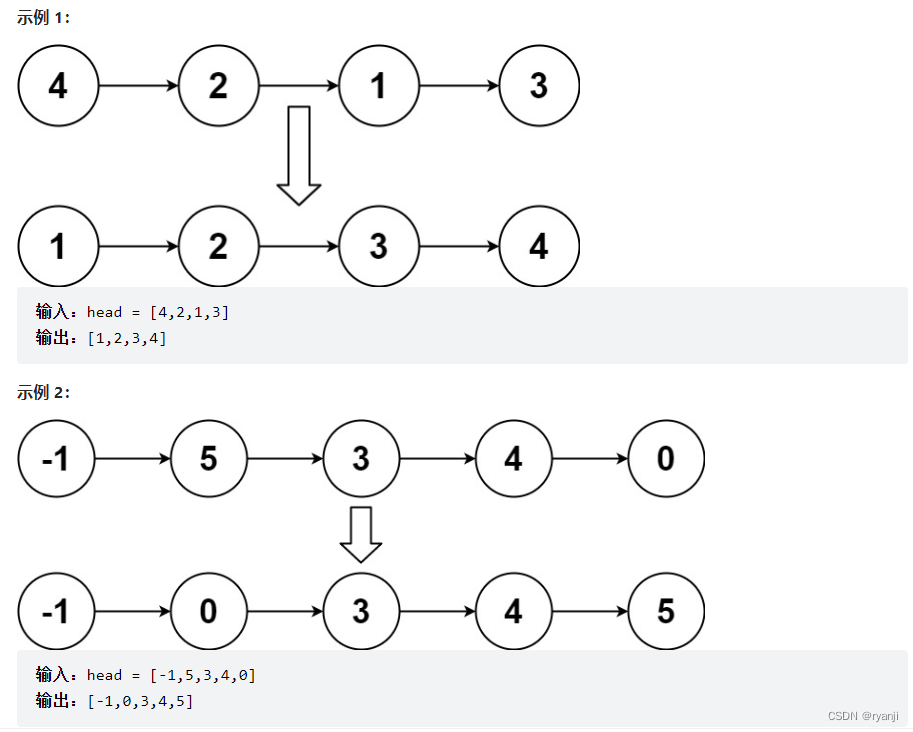链接:
题目:
给你链表的头结点 head ,请将其按 升序 排列并返回 排序后的链表 。

求解:
空间复杂度:O(1),时间复杂度:O(n(logn)) —>>>推荐用归并排序。
空间复杂度:O(n),时间复杂度:O(n(logn)) —>>>推荐用堆排序。
堆排序,好理解。
/**
* struct ListNode {
* int val;
* struct ListNode *next;
* };
*/
struct cmp{
bool operator()(int a, int b){
return a>b;
}
};
class Solution {
public:
/**
*
* @param head ListNode类 the head node
* @return ListNode类
*/
ListNode* sortInList(ListNode* head) {
// write code here
priority_queue<int,vector<int>,cmp> heap;
while(head){
heap.push(head->val);
head=head->next;
}
ListNode* dhead=new ListNode(-1);
ListNode* cur=dhead;
while(!heap.empty()){
cur->next=new ListNode(heap.top());heap.pop();
cur=cur->next;
}
return dhead->next;
}
};
class Solution {
public:
ListNode* sortList(ListNode* head) {
if (head == nullptr) {
return head;
}
int length = 0;
ListNode* node = head;
while (node != nullptr) {
length++;
node = node->next;
}
ListNode* dummyHead = new ListNode(0, head);
for (int subLength = 1; subLength < length; subLength <<= 1) {
ListNode* prev = dummyHead, *curr = dummyHead->next;
while (curr != nullptr) {
ListNode* head1 = curr;
for (int i = 1; i < subLength && curr->next != nullptr; i++) {
curr = curr->next;
}
ListNode* head2 = curr->next;
curr->next = nullptr;
curr = head2;
for (int i = 1; i < subLength && curr != nullptr && curr->next != nullptr; i++) {
curr = curr->next;
}
ListNode* next = nullptr;
if (curr != nullptr) {
next = curr->next;
curr->next = nullptr;
}
ListNode* merged = merge(head1, head2);
prev->next = merged;
while (prev->next != nullptr) {
prev = prev->next;
}
curr = next;
}
}
return dummyHead->next;
}
ListNode* merge(ListNode* head1, ListNode* head2) {
ListNode* dummyHead = new ListNode(0);
ListNode* temp = dummyHead, *temp1 = head1, *temp2 = head2;
while (temp1 != nullptr && temp2 != nullptr) {
if (temp1->val <= temp2->val) {
temp->next = temp1;
temp1 = temp1->next;
} else {
temp->next = temp2;
temp2 = temp2->next;
}
temp = temp->next;
}
if (temp1 != nullptr) {
temp->next = temp1;
} else if (temp2 != nullptr) {
temp->next = temp2;
}
return dummyHead->next;
}
};